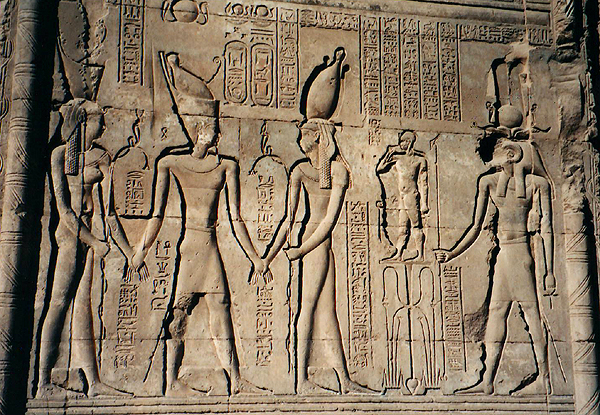
Claudius Crowned
Temple of Khnum, Esna

|
Claudius CrownedTemple of Khnum, Esna |
This is a coronation scene. The cobra goddess Wadjet stands to the left of Claudius and wears the Red Crown of Lower Egypt (northern Egypt, the delta). The vulture goddess Nekhbet stands to the right of Claudius and wears the White Crown of Upper Egypt (southern Egypt, the desert). Claudius wears the Double Crown of Egypt, which combines the Red and White crowns and therefore symbolizes the political unification of Northern and Southern Egypt.
In the present scene, the two goddesses lead Claudius into the presence of Khnum and Heka, a child-god of magic who was worshipped alongside Khnum at Esna. Heka stands on the symbol for "union" to reinforce the message that the Roman emperor Claudius is king, in traditional fashion, of Upper and Lower Egypt.
The symbolism of the Two Crowns goes all the way back to the Narmer Palette, c. 3100 BC, which depicts the earliest unification of Upper and Lower Egypt - the defining moment of Egyptian history. Three thousand years later, Egypt's foreign conquerors - first the Ptolemies, and then the Romans - appropriated this powerful and ancient symbolism as propaganda. By appealing to the highly conservative nature of Egyptian culture, Egypt's new masters intended to assert and reinforce the legitimacy of their rule.

|

|

|